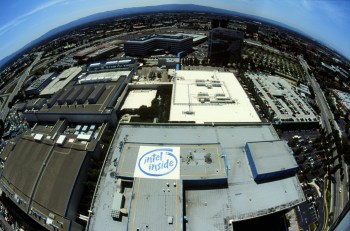Moore’s Law states that the number of transistors that can fit on a chip will double every two years, effectively creating unlimited exponential growth. WHY SHOULD I CARE, JOHN? I’ll tell you: more transistors = more powerful chips = more powerful computers = society advancing faster.
Moore’s Law was named for the founder of Intel, Mary Tyler Moore*, who first theorized it. But now theoretical physicist (he’s a real physicist, he is not, himself, theoretical) Michio Kaku, also a bestselling author, says it won’t hold up forever and is already breaking down:
in about ten years or so, we will see the collapse of Moore’s Law. In fact, already, already we see a slowing down of Moore’s Law. Computer power simply cannot maintain its rapid exponential rise using standard silicon technology. Intel Corporation has admitted this.
The reason it can’t keep up? Heat given off by the chips and energy leakage. Already there is confirmation that Intel’s Ivy Bridge chips run hotter than was expected. The design of the transistors in Ivy Bridge uses a three dimensional gate system that is supposed to curb energy leakage and it does but not enough, in Kaku’s opinion, to keep up with Moore’s Law.
Time’s article on this has a bunch more stuff on this involving the promise of molecular computers and the challenge of that technology (“molecules are teeny-tiny”).
*Okay fine, it was Gordon Moore, but he was the founder of Intel.
There’s a lot happening in the world. Through it all, Marketplace is here for you.
You rely on Marketplace to break down the world’s events and tell you how it affects you in a fact-based, approachable way. We rely on your financial support to keep making that possible.
Your donation today powers the independent journalism that you rely on. For just $5/month, you can help sustain Marketplace so we can keep reporting on the things that matter to you.


















